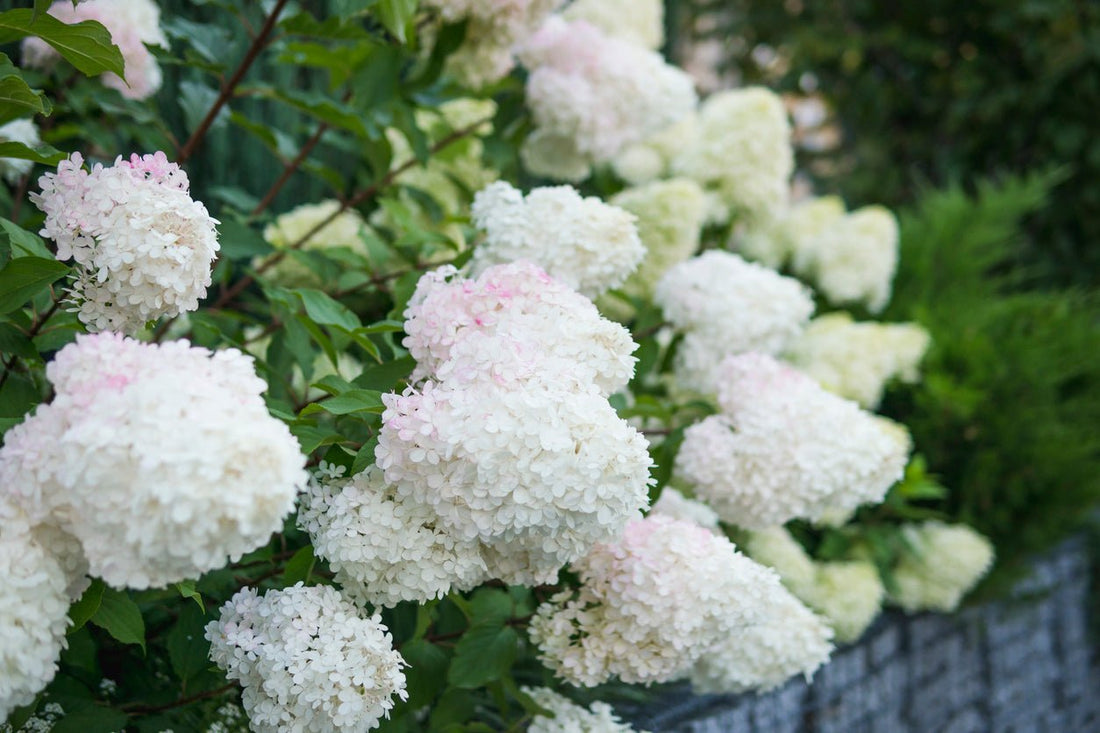The Lowdown on Creating a Stunning Hedge with Woody Shrubs
So, you want a hedge—perhaps to create some privacy, add structure to your garden, or just because you're tired of seeing your neighbour's inflatable flamingo every summer. Whatever your reason, creating a hedge with woody shrubs is a solid way to go. In Georgina, you’ve got plenty of great choices. From evergreen to deciduous, tall to compact, there’s a shrub for every garden goal. Let's dive into the art of building the perfect hedge.
Choose the Right Shrubs for the Job
The secret to a fantastic hedge is picking the right woody shrubs. Consider the following factors:
- Evergreen or Deciduous? Evergreens like cedar and yew provide year-round privacy and don’t leave you exposed when the snow flies. Deciduous shrubs, such as lilac or spriea, bring in gorgeous flowers in spring and stunning colour in fall, though they’ll drop their leaves in winter.
- Growth Rate: If you’re impatient, fast-growing shrubs like hydrangea, burning bush, or ninebark can fill in gaps quickly. But if you’re the patient type, slow-growing shrubs like yew offer dense, sculptural beauty in time.
- Height and Width: Think about how tall and wide you want your hedge to be. Are you looking for a towering privacy screen or a neat, low border? Burning bush or spirea might make for a lovely, compact hedge, while some hydrangeas or lilacs can reach impressive heights.
- Climate Resilience: Not every shrub is built to withstand Keswick winters. Hardy choices include cedar, yew, spirea, hydrangea, and lilac—shrubs that laugh in the face of frost.

Choosing Your Hedge Heroes
Before we start talking specifics, let's get one thing straight: hedges are like a garden's version of a fence. But unlike a cold, impersonal wooden fence, a hedge is alive, vibrant, and offers texture and colour. You can go classic with one type of shrub or mix it up with different varieties for a more natural, eye-catching look.
1. Cedar (Thuja spp.)
- The Best Thing Is: Cedar is the king of evergreen hedges, known for its dense, tall growth and year-round colour. It’s perfect for privacy and can handle cold winters like a pro.
- Care tips: Cedars love sun but don’t mind a little shade. Water them well during dry spells, especially when they're young.
- Good for: Privacy screens, windbreaks, and creating year-round green walls.
2. Yew (Taxus spp.)
- The Best Thing Is: Yew is slow-growing but oh-so-worth-it. It’s another evergreen, so it provides structure even in winter. Plus, it’s shade-tolerant, making it perfect for less sunny spots.
- Care tips: Don’t overwater these guys; they prefer well-drained soil. Prune them in late winter to keep them tidy.
- Good for: Low-maintenance hedges, shady spots, and formal gardens.
3. Lilac (Syringa vulgaris)
- The Best Thing Is: If you want a hedge that gives back, lilac is your go-to. Not only does it provide a good screen, but it also rewards you with fragrant blooms in spring.
- Care tips: Lilacs love full sun and good airflow. Give them space and trim after flowering to maintain shape.
- Good for: A fragrant, flowering hedge that doubles as a scent bomb in late spring.
4. Hydrangea (Hydrangea paniculata)
- The Best Thing Is: Hydrangeas add a pop of colour with their massive, showy blooms. They’re a bit more relaxed than formal hedges but still bring the drama.
- Care tips: These need consistent moisture and do best in partial sun. Prune in early spring to encourage new growth.
- Good for: A hedge with flair, mixing privacy with flower power.
5. Spirea (Spiraea spp.)
- The Best Thing Is: Spirea is a hardy, deciduous shrub that bursts with blooms in late spring to early summer. It’s easy to grow, tolerates poor soil, and is perfect for a less formal hedge.
- Care tips: Plant them in full sun for the best flowers. Give them a trim after blooming to keep them neat.
- Good for: Low-maintenance, flower-packed hedges that look good even when not in bloom.
6. Burning Bush (Euonymus alatus)
- The Best Thing Is: Want a hedge that’s a showstopper in fall? Burning bush is famous for its fiery red foliage. It's a great choice if you want seasonal drama in your hedge.
- Care tips: This shrub prefers full sun for the best colour but tolerates some shade. It’s relatively low-maintenance.
- Good for: A vibrant hedge that transitions through the seasons, especially if you love fall colour.
7. Ninebark (Physocarpus opulifolius)
- The Best Thing Is: Ninebark is tough as nails and brings texture with its peeling bark and deep-coloured leaves. Plus, its white or pink flowers are a bonus.
- Care tips: Ninebark thrives in full sun to partial shade and isn’t picky about soil. Prune after flowering to shape.
- Good for: A natural, wild-looking hedge with year-round interest, thanks to its bark and foliage.

One-Type Variety vs. Mix-and-Match Hedge
Hedges can be uniform or a glorious jumble of different textures and colours. You have two main hedge options: a single-species hedge or a mixed hedge. Each comes with its own vibe.
- Single-species hedge: Classic, uniform, and formal. Think tall cedar walls that scream “private property.” These are great for strong lines and a clean look.
- Mixed-species hedge: Wild, diverse, and a little unpredictable—in the best way. You can mix flowering shrubs like lilac and hydrangea with evergreens like cedar or yew. This creates a more relaxed and natural appearance, plus it’s great for biodiversity.
Extra Points to Consider
- Layer It Up: Consider adding different layers of plants in front of or behind your hedge for extra depth and interest.
- Incorporate Wildlife: Add shrubs that attract birds and pollinators for a living, breathing hedge that supports local ecosystems.

Planting and Managing Your Hedge
Once you've picked your shrub heroes, it’s time to get them in the ground.
- Spacing: Shrubs need space to grow, so don’t crowd them. For tighter hedges, plant cedars or yews 2-3 feet apart. For larger shrubs like lilac or burning bush, give them 4-6 feet between each plant.
- Digging: Dig a trench (or individual holes) that’s twice as wide as the root ball of your shrub. Depth is key—plant them at the same depth as they were in their nursery pots.
- Watering: Deep watering is the name of the game, especially in the first few years. It helps roots establish. Keep an eye out during dry spells, and don’t let them go thirsty.
- Mulching: Apply a good layer of mulch around the base to retain moisture and fend off weeds. Plus, mulch just makes everything look polished.
- Pruning: Trim regularly to keep your hedge looking sharp, especially for fast growers like spirea or cedar. Lilacs and hydrangeas need pruning after blooming for next year’s flowers. For evergreens, prune in late winter or early spring before new growth kicks in.
So, there you have it, whether you go all-in on cedars for a towering green fortress or mix things up with a variety of flowering and evergreen shrubs, a woody shrub hedge in Keswick can do wonders for your garden. It’s practical, adds beauty, and creates an ever-changing natural border. Just give your shrubs some love, water, and the occasional haircut, and they’ll be happy to grow for years to come.
Happy gardening!




